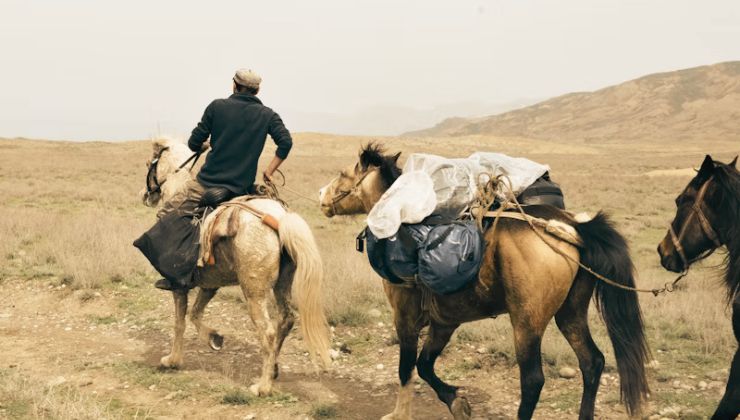
Longest Travellers
Throughout history, the concept of travel has fascinated humankind. Whether by instinct, curiosity, or necessity, both humans and animals have embarked on incredible journeys across land, sea, and sky. Among these, the longest travellers stand out as symbols of endurance, courage, and adaptability. From ancient migrations to modern expeditions, and from animal journeys to interstellar exploration, travel has always shaped the way we understand the world.
This essay explores the phenomenon of the longest travellers by examining migrations in nature, historical human journeys, modern global travel, and even futuristic voyages into space.
Nature’s Longest Travellers
Travel is not exclusive to humans. In fact, some of the most remarkable journeys are undertaken by animals whose instinct drives them across thousands of miles.
Arctic Tern: The Champion of Distance
The Arctic tern is often called the greatest voyager of the natural world. These small seabirds travel from the Arctic to the Antarctic and back each year, covering nearly 44,000 miles. They experience two summers annually, making them true longest travellers of the skies.
Monarch Butterflies
Every year, monarch butterflies migrate from Canada and the United States to central Mexico. Their journey can extend up to 3,000 miles, an incredible feat for such delicate creatures. Despite their size, they prove that the longest travellers can come in the smallest forms.
Whales and Marine Journeys
Marine animals also make astonishing migrations. The gray whale, for instance, travels about 10,000 miles round trip from feeding grounds in the Arctic to breeding lagoons in Mexico. Their determination to survive and reproduce earns them a place among the natural world’s longest travellers.
Human Migration in Ancient Times
Long before planes, trains, and cars, humans embarked on monumental migrations. These movements shaped civilizations, cultures, and identities.
Early Human Expansion
Around 70,000 years ago, early humans left Africa in search of better resources. This journey, which spread populations across Asia, Europe, and eventually the Americas, was one of the earliest examples of humanity as the longest travellers.
The Silk Road
The Silk Road connected East and West over thousands of miles, running from China to the Mediterranean. Traders, scholars, and explorers braved deserts and mountains to exchange goods, ideas, and cultures. In many ways, the merchants who risked everything on this journey were among history’s longest travellers.
Polynesian Voyages
Polynesian navigators used stars, winds, and ocean currents to explore vast stretches of the Pacific Ocean. Their voyages connected distant islands, showcasing remarkable skill and courage. These seafarers became the ocean’s longest travellers of the human world.
Explorers Who Changed the World
As time progressed, human curiosity and ambition gave rise to explorers who ventured further than anyone before them.
Marco Polo
The Venetian merchant Marco Polo’s travels to China in the 13th century were legendary. His accounts opened Europe’s eyes to Asia’s wonders, establishing him as one of history’s most celebrated longest travellers.
Christopher Columbus
In 1492, Columbus crossed the Atlantic Ocean, marking the beginning of Europe’s encounter with the Americas. His daring journey forever changed the course of world history, highlighting the risks that the longest travellers have always taken.
Ferdinand Magellan
Magellan’s expedition achieved the first circumnavigation of the globe, proving that the Earth was indeed round and interconnected. Though Magellan did not survive the voyage, his crew’s success placed them among the most daring longest travellers of all time.
Pilgrimages and Sacred Journeys
Not all travel was for exploration or trade. For centuries, faith and spirituality motivated long journeys across continents.
The Hajj
Muslims from around the world travel to Mecca each year to perform the Hajj, one of the five pillars of Islam. For many, this journey is both spiritual and physical, making them part of one of the world’s largest gatherings of longest travellers.
Medieval Pilgrimages
In medieval Europe, pilgrims often walked thousands of miles to reach sacred destinations such as Santiago de Compostela in Spain or Canterbury in England. Despite limited resources, these pilgrims persevered, showing that faith could transform ordinary people into the longest travellers of their time.
The Age of Modern Transportation
With the invention of modern transportation, the possibilities of travel expanded beyond imagination.
Railways and Steamships
The 19th century introduced railways and steamships, shrinking the world and allowing people to cover vast distances quickly. Immigrants crossing the Atlantic became some of the most determined longest travellers, searching for new opportunities and better lives.
Aviation and Global Travel
The Wright brothers’ invention of the airplane revolutionized travel forever. By the 20th century, air travel allowed people to cross continents in hours instead of months. Frequent flyers and long-haul travelers became modern versions of the longest travellers, connecting every corner of the globe.
The Longest Travellers in Sports and Adventure
Beyond migration and necessity, travel also became a form of competition and adventure.
Round-the-World Races
Sailors who compete in solo or team circumnavigation races push themselves to the limit. These races demand months of endurance, placing athletes among the bravest longest travellers of our era.
Mountaineering Expeditions
Climbers attempting Mount Everest or traversing remote ranges also embody the spirit of the longest travellers. Their journeys are not only physical but also symbolic of humanity’s determination to reach new heights.
Migration in the Modern World
In today’s world, migration remains a reality for millions of people.
Refugees and Displacement
Wars, conflicts, and climate change force people to leave their homes in search of safety. Refugees often walk, sail, or fly across dangerous routes, making them unwilling yet powerful examples of the longest travellers of modern times.
Globalization and Work Migration
Many workers travel to foreign lands for employment opportunities. From construction workers in the Middle East to professionals in Western countries, these people continue the tradition of the longest travellers, sustaining economies and bridging cultures.
Futuristic Journeys: Space Travel
The future promises a new chapter in the story of the longest travellers.
Space Exploration
Astronauts on missions to the International Space Station already represent pioneers of human travel beyond Earth. Their journeys into orbit have expanded humanity’s horizons.
Mars and Beyond
Plans for colonizing Mars are underway, and the journey itself would take months. Future astronauts may become the greatest longest travellers in human history, venturing into the unknown to secure humanity’s survival.
Interstellar Dreams
Science fiction imagines journeys to distant stars and galaxies. Though currently beyond our reach, the dream of becoming interstellar longest travellers continues to inspire scientists and storytellers alike.
The Philosophy of Long Journeys
Travel is not only about physical distance. It also represents a journey of the mind and spirit.
Personal Growth Through Travel
Those who travel far often return with new perspectives. Whether walking across continents or flying between cultures, the longest travellers gain insights that reshape their understanding of the world.
The Symbolism of Endless Journeys
In literature and mythology, long journeys symbolize transformation. From Homer’s Odyssey to modern novels, heroes who endure great voyages reflect the eternal truth that the longest travellers are also seekers of wisdom.
Conclusion
From the flight of the Arctic tern to the voyage of interstellar astronauts, the longest travellers remind us of humanity’s shared spirit of endurance and exploration. Animals cross oceans by instinct, humans migrate by necessity, explorers set sail by curiosity, and astronauts reach for the stars by ambition.
The history of travel is a story of resilience, courage, and discovery. It is the story of survival and progress. Most importantly, it is the story of connection — linking distant lands, cultures, and generations.
In every era, the longest travellers have shaped the world we live in. And as technology advances, their journeys will continue, reaching horizons we can only imagine today.






